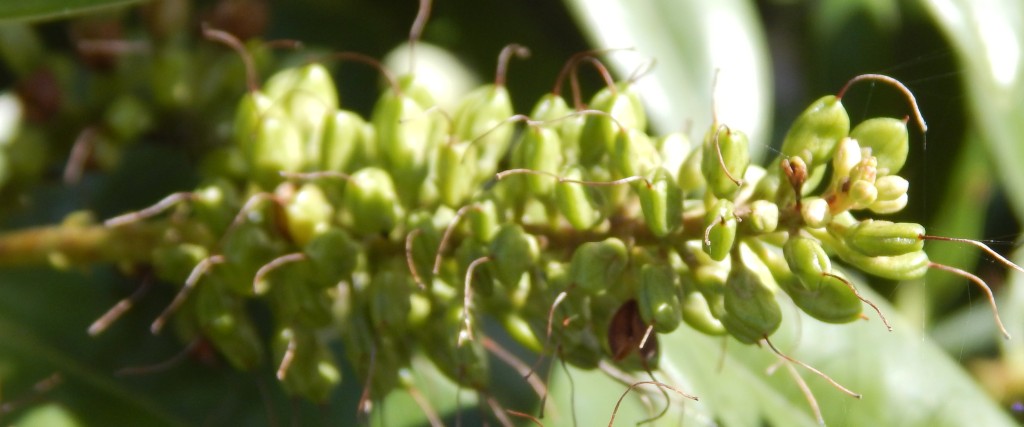
[356] Veronica speciosa, New Zealand Hebe and others
Introduction
I will take Veronica speciosa (or Hebe speciosa,) New Zealand Hebe, as typical of a very large genus containing many popular varieties of garden plants. Many of them are known horticulturally as Hebes, as they used to belong to a genus called Hebe, but together with about half a dozen other genera they are now being absorbed into an enlarged genus Veronica, currently with about five hundred species.
Most of the former Hebe species come from New Zealand so the name is not particularly useful. Some are now called Shrubby Veronicas.
Many other species of Veronica are called Speedwell.
Taxonomy
Kingdom – Plants
Division – Vascular Plants
Class – Angiosperms (Flowering Plants)
Order – Lamiales
Family – Plantaginaceae
Tribe – Veroniceae
Genus – Veronica
Scientific Name – Veronica speciosa and others
It is still often known as Hebe speciosa. The genus Veronica has about forty scientific synonyms.
Other species, hybrids and varieties may be seen.
Name
Some plants in the genus Veronica have had the common name Veronica for four or five hundred years. It comes from the Latin Saint Veronica, from the Ancient Greek Berenice.
In Greek mythology, Hebe was a daughter of Zeus and Hera. She was the cupbearer to the gods and goddesses of Mount Olympus and the goddess of youth. She married Heracles, often Latinized as Hercules. I never attempt to explain why plants are name after actual or mythological people.
I can’t find any trace of the meaning of Speedwell other than a suggestion that it could mean ‘speed well.’
Former Hebe Species
The species of Hebe now absorbed into Veronica are compact evergreen shrubs of various sizes.
Wikipedia describes the leaf structure concisely as ‘four perpendicular rows in opposite decussate pairs.’ I will give you a translation of this. Four leaves come out from the stem forming a flat horizontal cross shape. Just above them is another pair. This continues up each stem to form a dense mass of leaves.
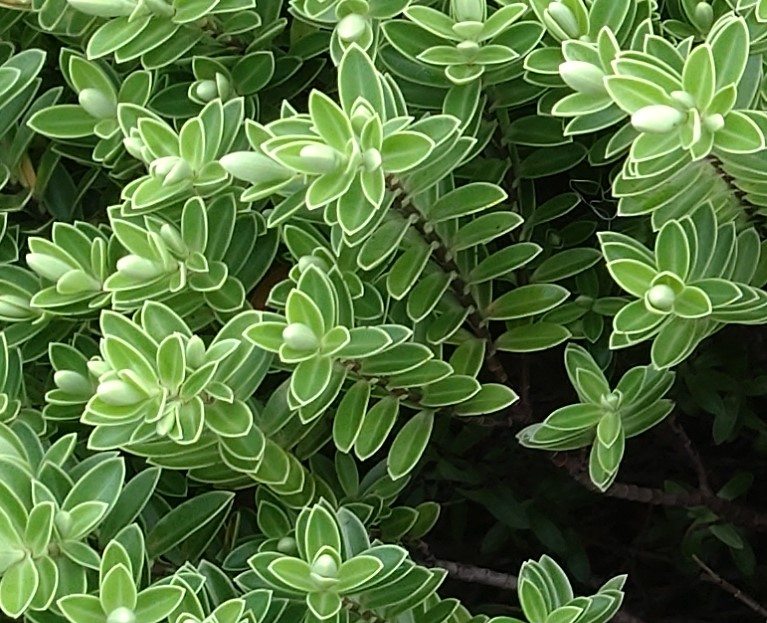
They may be very small leaves as shown above or more elongated leaves, still keeping the same four-way structure.
The flowers, which can be blue, purple or white, are very small arranged in spiked inflorescences. It is nice to have some recognition of my oft-repeated problem and Wikipedia notes that: ‘Identification of Hebe species is difficult, especially if they are not in flower.’ This is more difficult in the UK where, as cultivated plants, they are rarely identified to species level when sold.
Some varieties are named cultivars but I will mention briefly some species that are identified horticulturally.
- Veronica longifolia, Garden Speedwell or Longleaf Speedwell, has long leaves and long blue inflorescences.
- Veronica rakaiensis, Rakai Hebe (named from a town and river in New Zealand,) has very small leaves and long inflorescences of white flowers. This is sold as a compact, round bright green shrub that may occasionally flower.
- Veronica salicifolia or Veronica stricta, Willow-leaf Hebe or Koromiko (its Maori name,) has long, willow-like leaves and long white inflorescences.
- Veronica speciosa, New Zealand Hebe, Showy Hebe, Showy-speedwell or Maori Titirangi or Napuka, has elongated leaves but not very long or very thin. Its pink to purple inflorescences are wider and shorter than other varieties.
- Veronica spicata, Spiked Speedwell, a very small shrub with very long inflorescences.
All may be sold as Hebe.
I will leave it to you to decide on the species for the following pictures.
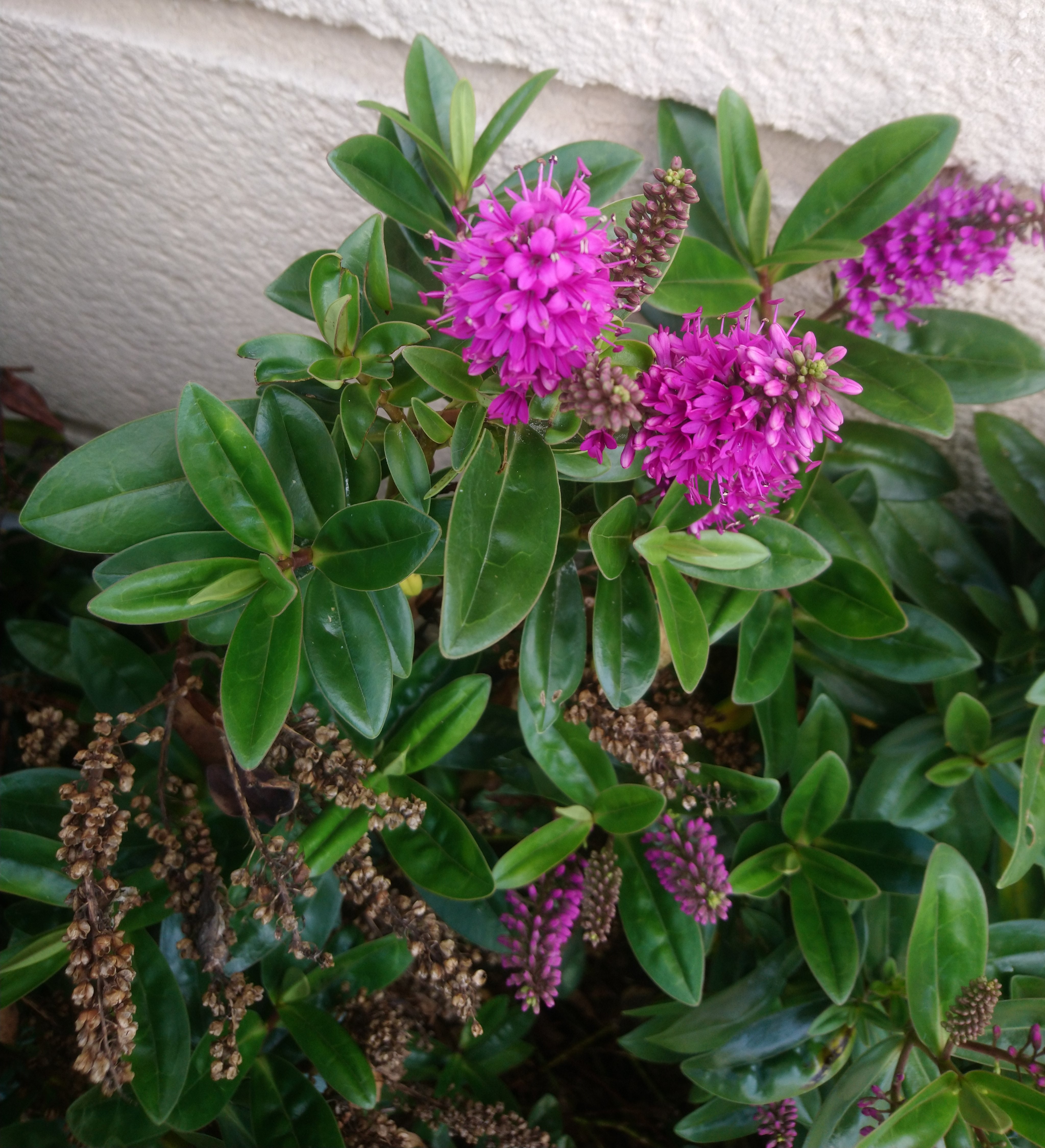
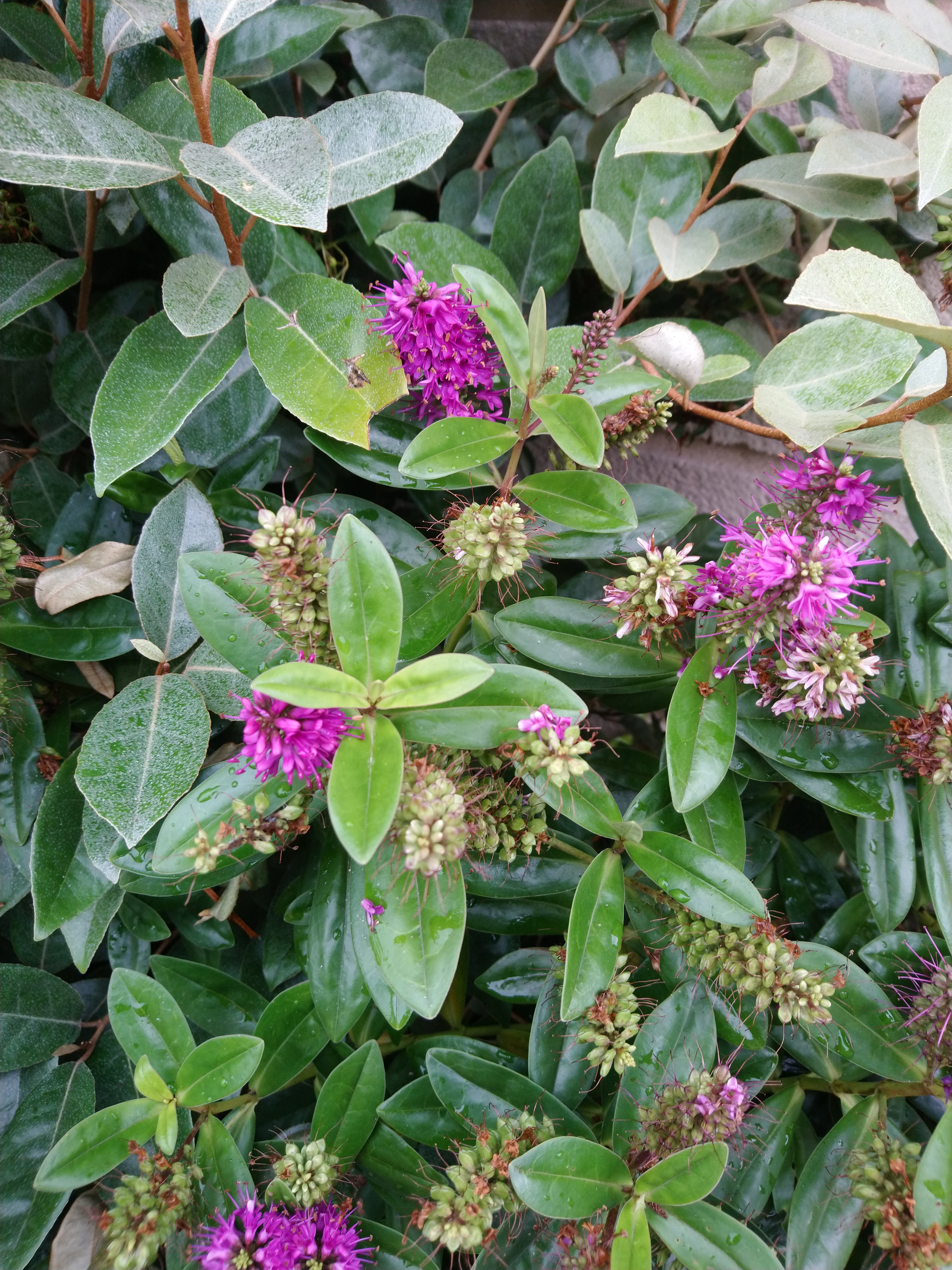

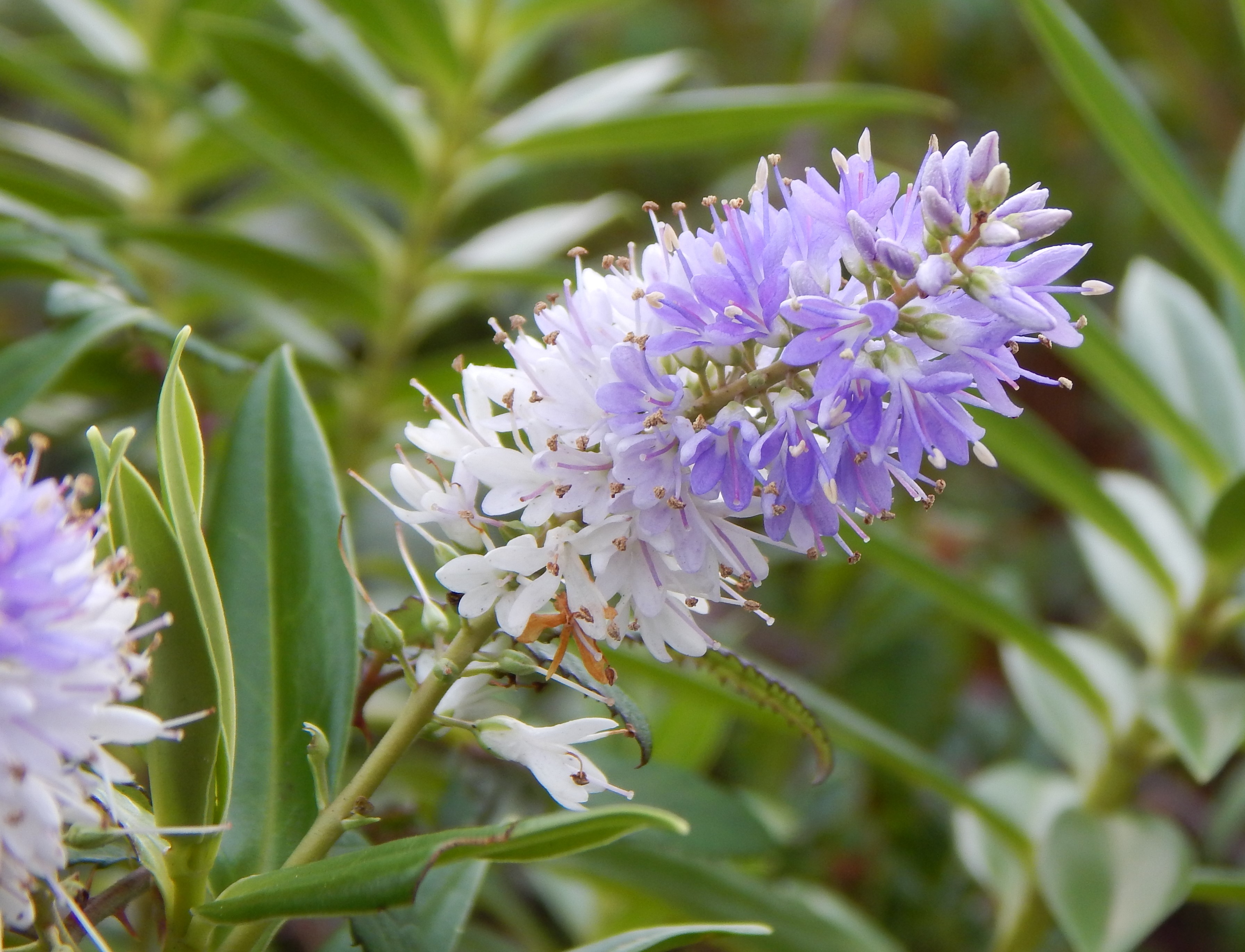









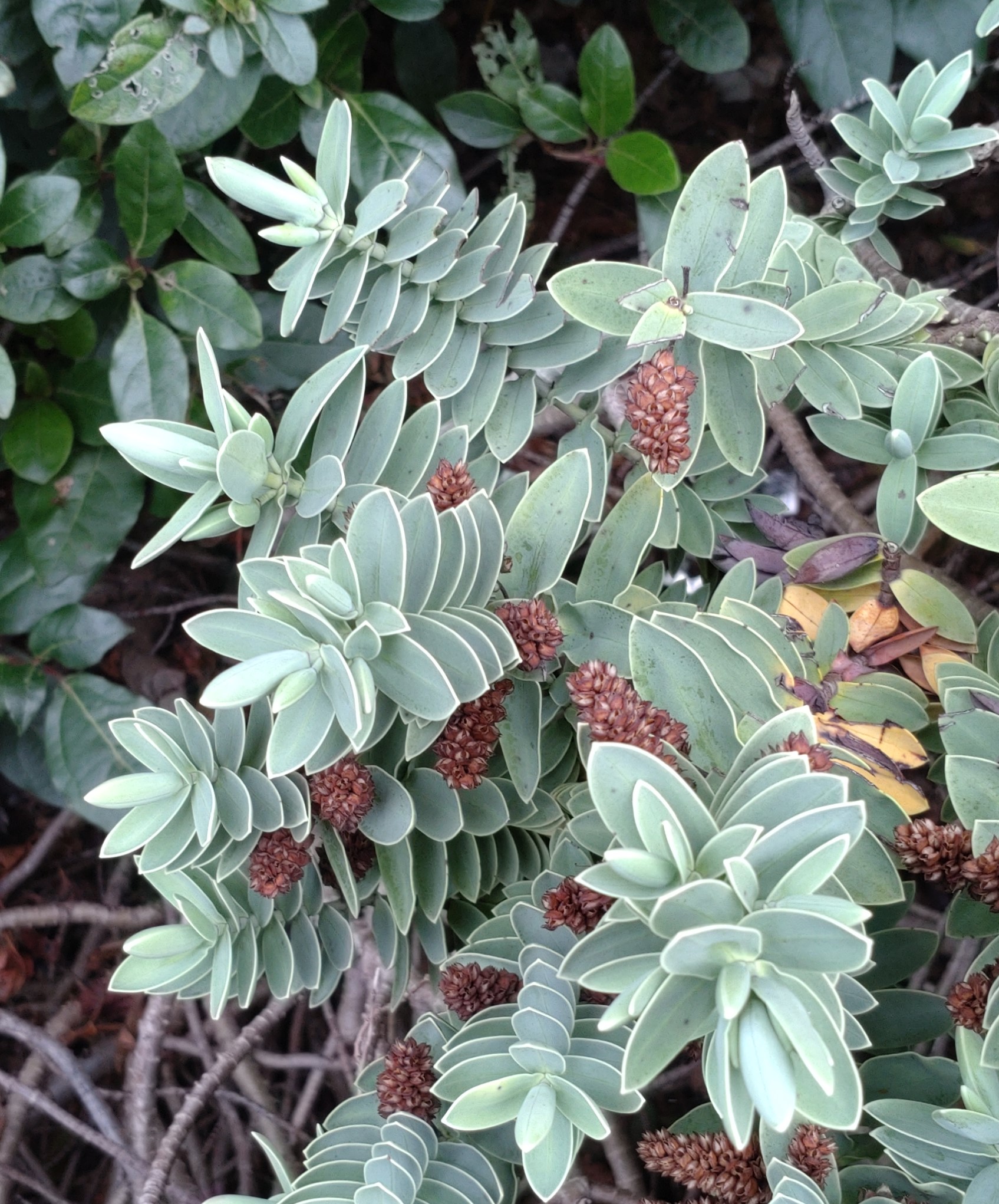

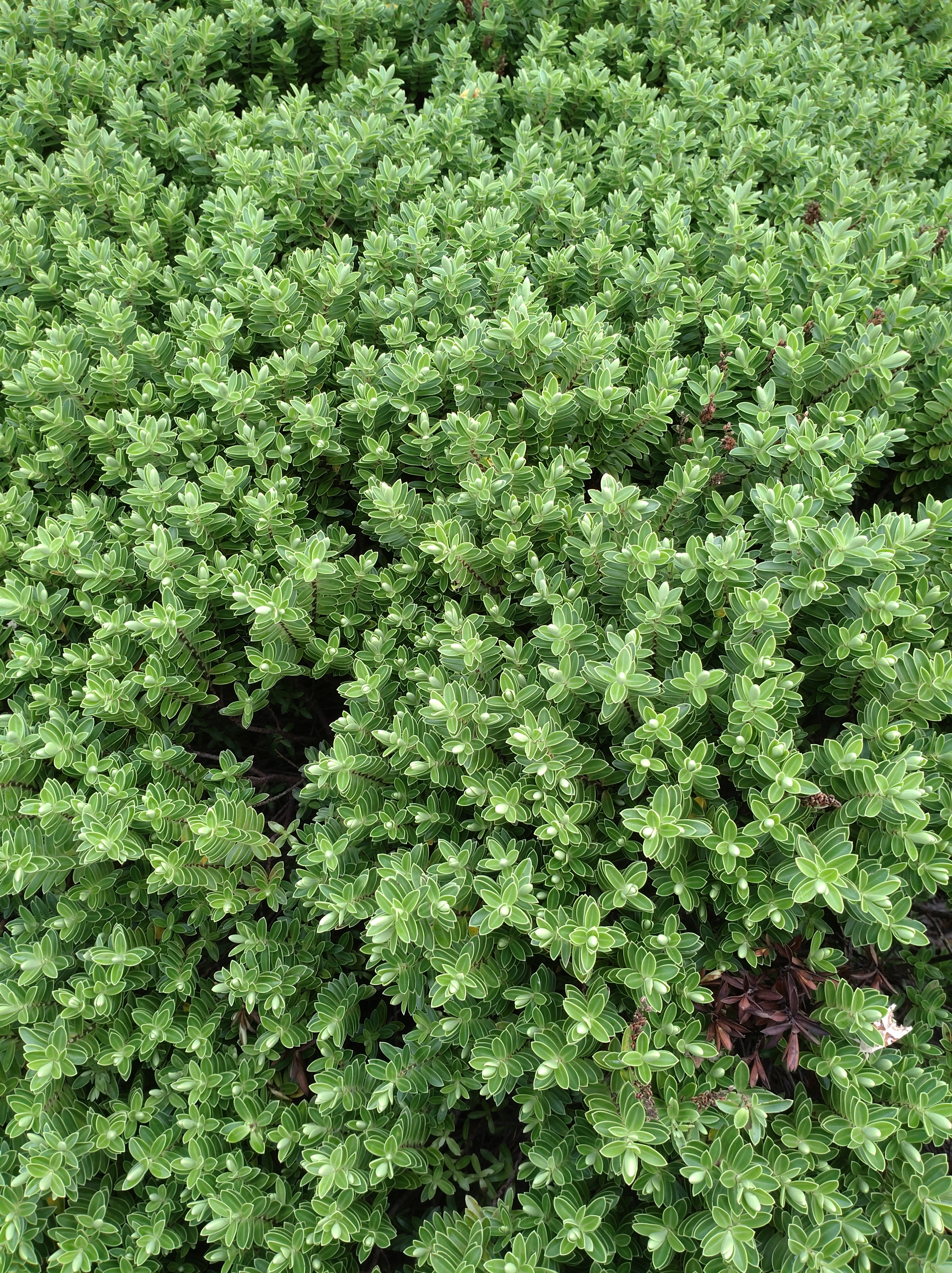
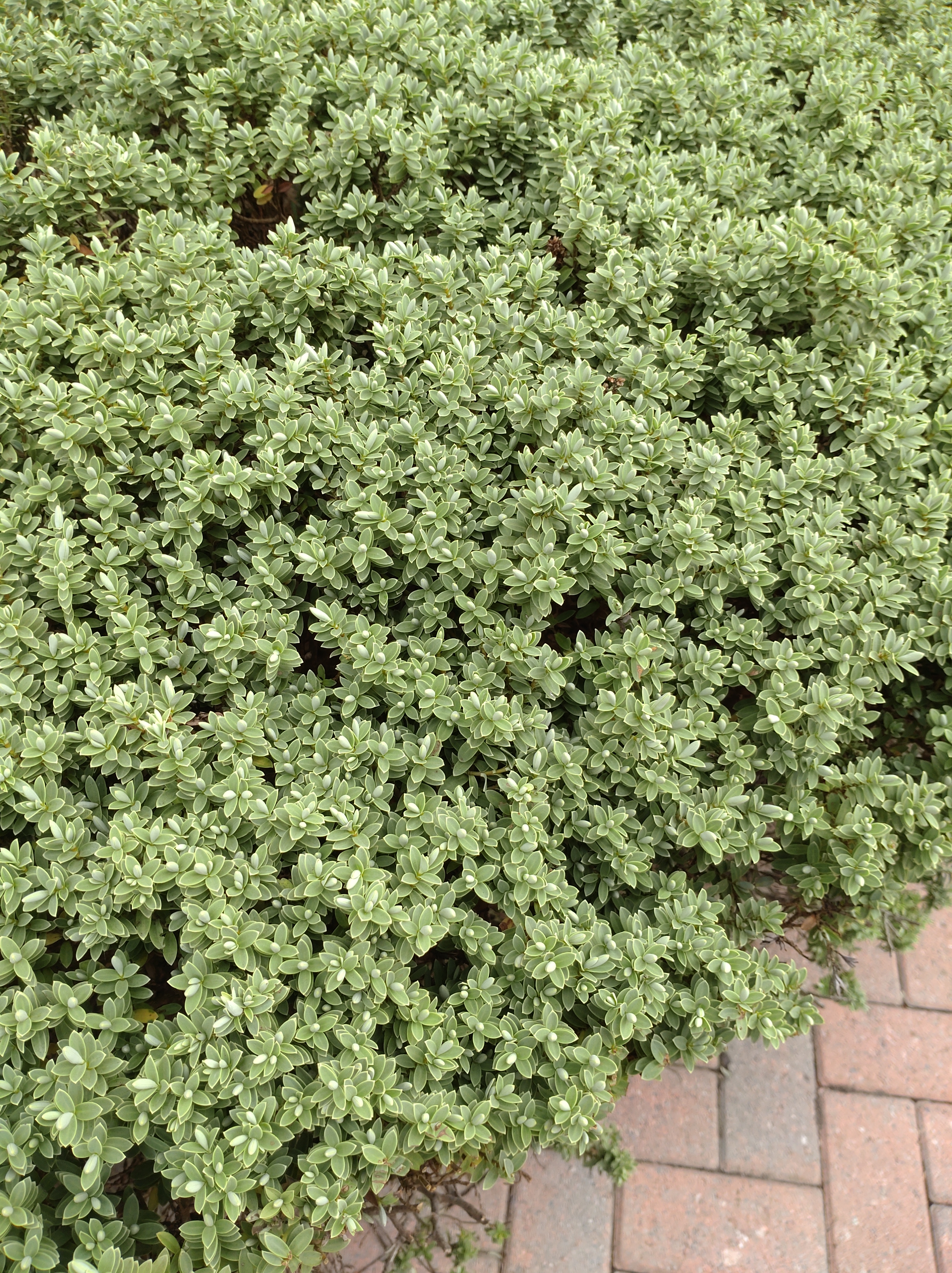


Germander Speedwell
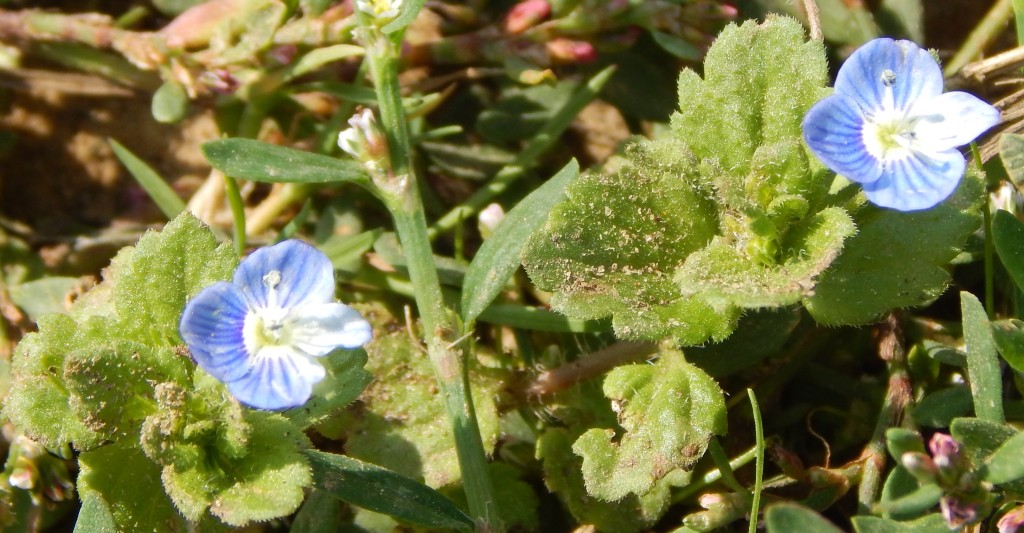
Veronica chamaedrys, Germander Speedwell, is one of the Veronica species that has not come from merging in the genus Hebe. It is a common and widespread wildflower native to Europe and western Asia. It is very low-growing, with small, pretty blue flowers, sometimes an unwanted garden weed. Its other common names include Bird’s-eye Speedwell and Cat’s Eyes.
[The explanation of its name is a bit complicated. As noted above, I can’t find any trace of the meaning of speedwell other than a suggestion that it could mean ‘speed well.’ Germander comes via French possibly from the Latin chamaedrys, which may mean charisma or gift. Other origins have been suggested. Germander Meadowsweet, Spyraea chamaedryfolia, derives its names from the similarity of its flowers to Germander Speedwell. Germander Sage, Salvia Chamaedryoides, gets its name from a similarity to another species, Teucrium chamaedrys, called Wall Germander. Most species of the genus Teucrium are also called Germanders!]
Germander Speedwell is a common, hardy turf weed because it is very low-growing and spreads in a creeping way, sending down roots. There are half a dozen other very similar species of Veronica.
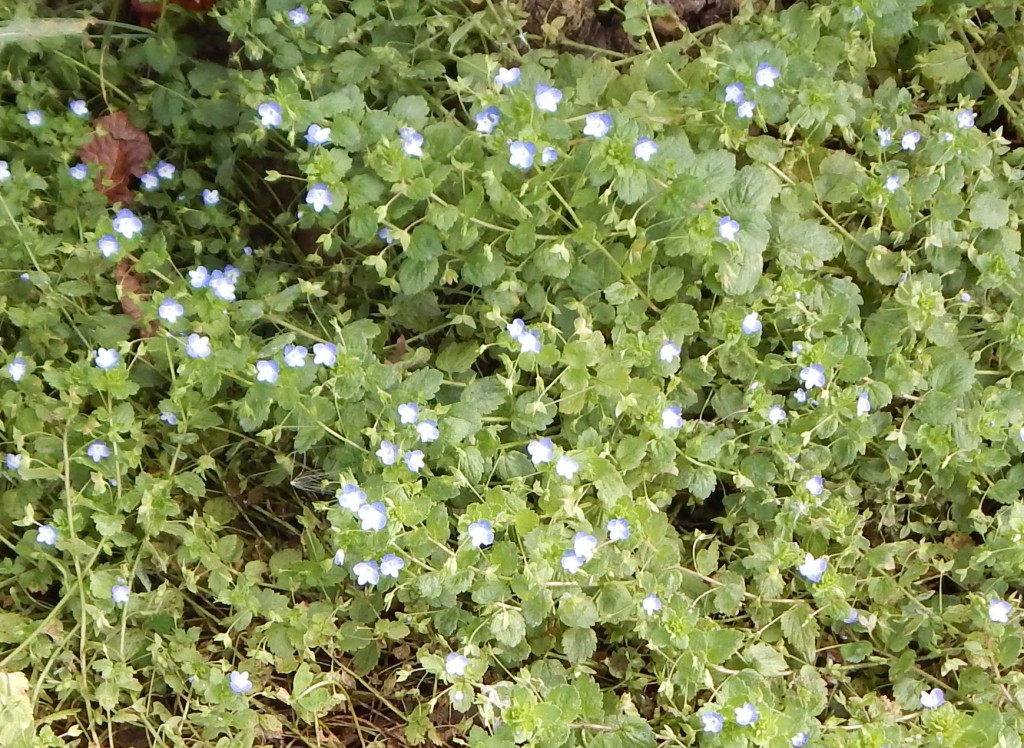
It has small blue flowers with four petals and radial stripes (nothing like the inflorescences from the former species of Hebe.)

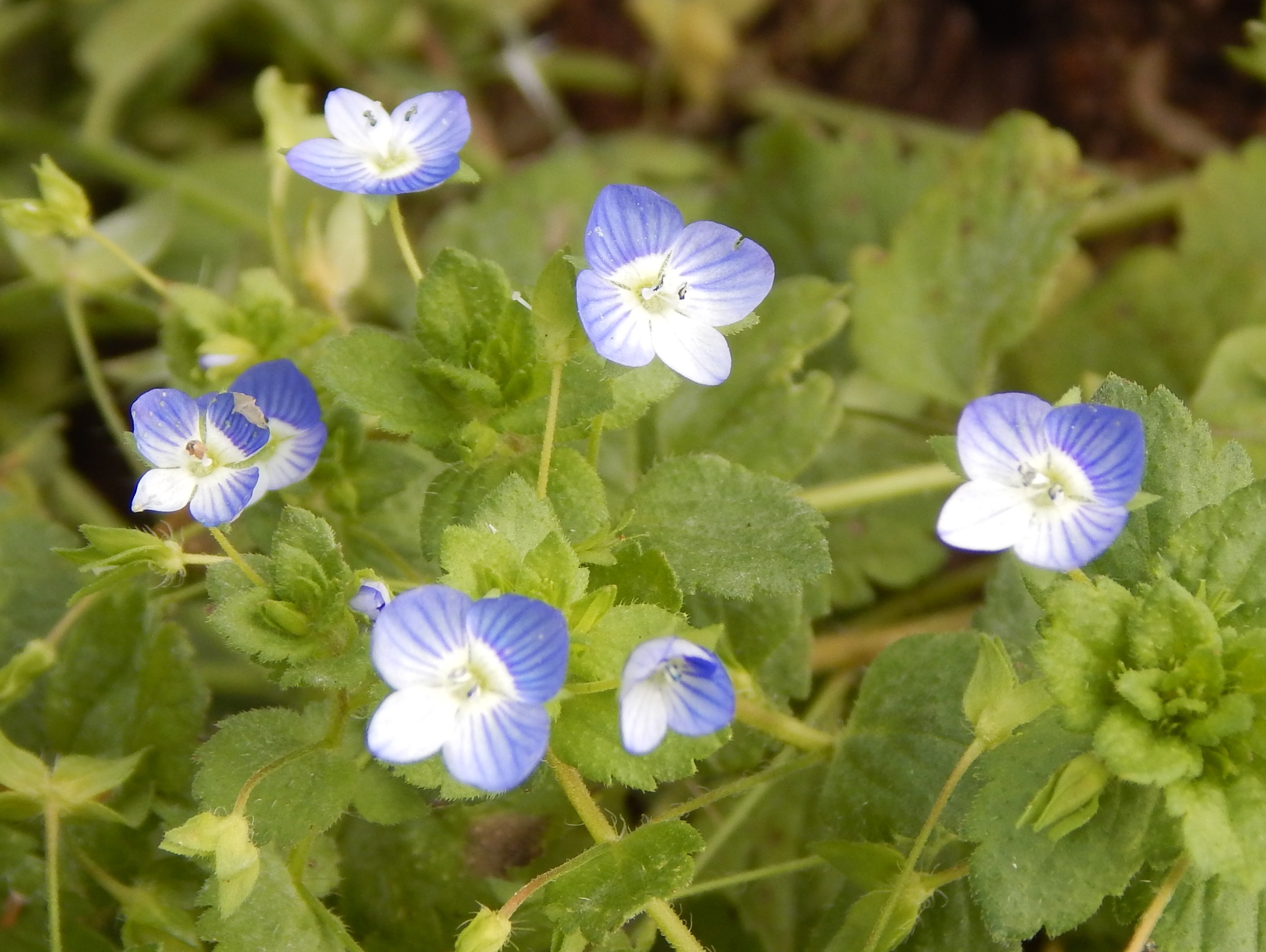

It is available as a cultivated plant and has been used as a herbal medicine, as tea, for various disorders.
Other Notes
I took a long time before deciding to include these flowers. I see three or four different types as small hedges in the estate where I live but my identification app has failed me consistently. It gets to Veronica almost immediately but always gives up on the exact species. Like many of my posts it covers the genus rather than a single species.
See also
We only have one more type of plant that you would call a flower and it’s another garden plant with lots of horticultural varieties. You could hazard a guess with what’s left of the alphabet …
